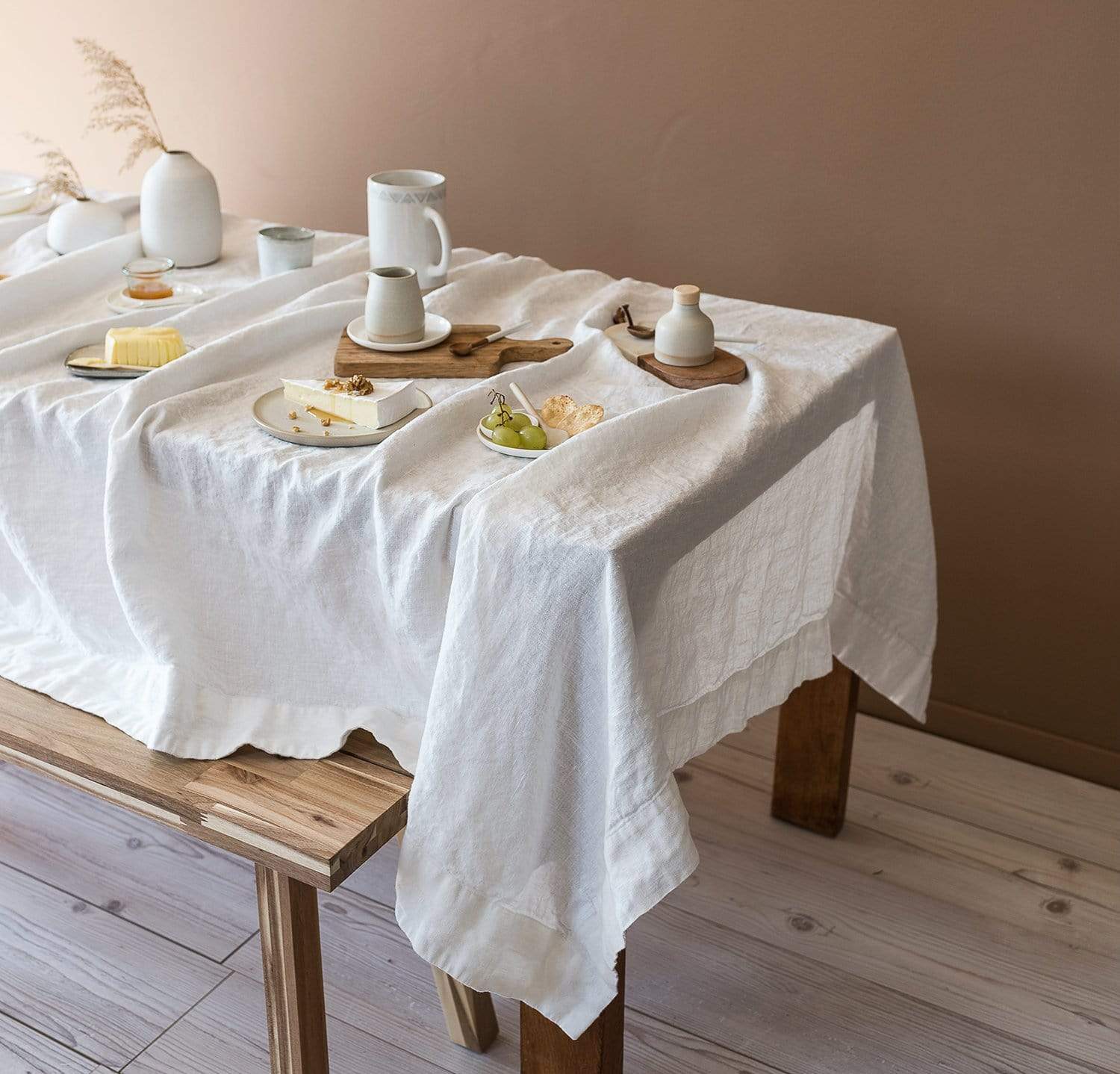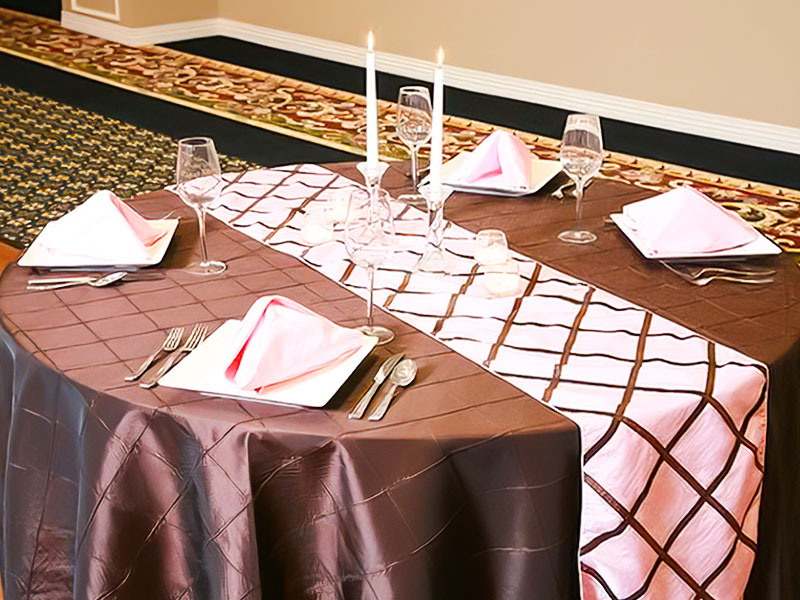Innovative Table Runner Uses: Beyond the Table
Wiki Article
Linen Fabric Technologies: Exploring Modern Trends and Creative Applications in Design and Textile Market
From lasting manufacturing techniques to advanced weaving innovations, the advancement of bed linen is improving the landscape of the textile sector. As we dig into the worlds of creative layout applications and the appearance of linen blends and crossbreed textiles, a brand-new phase unfolds in which bed linen's function in future fabric technologies takes center stage.Sustainable Practices in Bed Linen Manufacturing
Lasting methods in bed linen production have actually become increasingly essential in the fabric market's initiatives to minimize ecological effect and advertise ethical sourcing methods. Bed linen, a natural fiber stemmed from the flax plant, offers a series of benefits such as biodegradability, durability, and breathability. Nonetheless, typical techniques of linen manufacturing can include considerable water usage, pesticide usage, and energy-intensive procedures.To deal with these difficulties, many fabric makers are embracing sustainable methods throughout the linen production procedure. This includes sourcing flax from organic farms that prevent hazardous chemicals and chemicals, applying water-efficient retting strategies to essence fibers from the flax stalks, and making use of eco-friendly dyes and coatings. In addition, some companies are spending in renewable resource resources to power their manufacturing centers and minimizing waste with recycling and upcycling efforts.
Technical Improvements in Bed Linen Weaving
With the growing emphasis on sustainable practices in bed linen manufacturing, the textile market is now seeing a surge in technical improvements especially intended at transforming the art of linen weaving. These innovations are reshaping the way bed linen textiles are generated, providing raised efficiency, high quality, and imagination in weaving techniques.One of the vital technical developments in linen weaving is the assimilation of digital looms. These sophisticated looms are furnished with software application that enables complex and detailed designs to be woven with accuracy. By digitizing the weaving process, makers can achieve greater consistency and precision in their bed linen fabrics.
In addition, developments in yarn spinning innovation have allowed the manufacturing of finer and even more long lasting linen threads - table cloths. This leads to softer and smoother bed linen textiles that keep their top quality also after multiple uses and cleans
In addition, the advancement of environmentally friendly dyeing processes and coatings for bed linen materials is getting traction. These sustainable methods not only minimize the environmental effect but also accommodate the raising consumer demand for morally generated textiles.
Creative Style Applications for Bed Linen
Ingenious creative methods are significantly shaping the innovative layout applications for bed linen in the fabric sector. Linen's natural aesthetic charm and capacity to blend with various other materials make it a preferred option for developing special garments and accessories that cater to the eco mindful consumer.In addition, designers are try out linen in home decor, using its breathable and sturdy nature to craft fashionable home furnishings such as curtains, bed linen, and upholstery. The structure and drape of bed linen bring a feeling of class and convenience to indoor areas, adding a touch of sophistication to modern-day homes.

Linen Blends and Hybrid Fabrics

Crossbreed textiles, on the various other hand, take the concept of blending an action better by incorporating extra components such as metallic threads, recycled products, or conductive fibers. These ingenious fabrics not only broaden the design opportunities yet additionally introduce practical facets like conductivity, antimicrobial residential or commercial properties, or enhanced durability. Hybrid fabrics are progressively being utilized in various sectors, consisting of style, interior decoration, and technical fabrics, where the demand for multifunctional materials gets on the rise.
Linen's Role in Future Fabric Innovations
:max_bytes(150000):strip_icc()/__opt__aboutcom__coeus__resources__content_migration__brides__proteus__585bf60c786c7a9c62c877d2__11-a40aeea82c0a440282d07dadffc6a7d8.jpeg)
In the world of future textile technologies, bed linen is anticipated to be a vital player in the growth of advanced practical materials. Scientists and developers are exploring ways to enhance bed linen's inherent qualities via technological improvements, such as including clever fabrics, nanotechnology, and performance surfaces. These advancements intend to boost bed linen's performance features, making it appropriate for a wider series of applications, from activewear to protective garments.
Furthermore, the combination of bed linen with various other table runner natural or artificial fibers opens up limitless possibilities for producing novel textiles with one-of-a-kind buildings and functionalities. By leveraging linen's attributes and discovering ingenious blends, the fabric market is poised to introduce exciting growths that satisfy progressing consumer requirements and sustainability requirements.
Conclusion
Finally, the exploration of lasting techniques, technological developments, imaginative style applications, linen blends, and its role in future fabric developments highlight the continual development of linen fabric in the modern layout and fabric sector. With a concentrate on advancement and creativity, the convenience and green nature of bed linen make it a valuable material for developers and makers alike, paving the method for more growths and developments in the area of fabrics.As we dive right into the worlds of innovative style applications and the appearance of bed linen blends and crossbreed fabrics, a new chapter unravels in which bed linen's duty in future textile innovations takes facility stage.
Checking out the combination of linen with various other materials has actually led to the introduction of innovative blends and crossbreed fabrics in the contemporary fabric sector. Bed linen blends supply a distinct mix of the characteristics of bed linen with those of other fibers, resulting in fabrics that have enhanced properties such as boosted toughness, enhanced draping, and reduced wrinkling.The evolution of linen blends and hybrid materials has actually established the phase for Bed linen to play a critical function in driving future fabric developments.In the world of future fabric innovations, bed linen is expected to be an essential gamer in the development of sophisticated useful textiles.
Report this wiki page